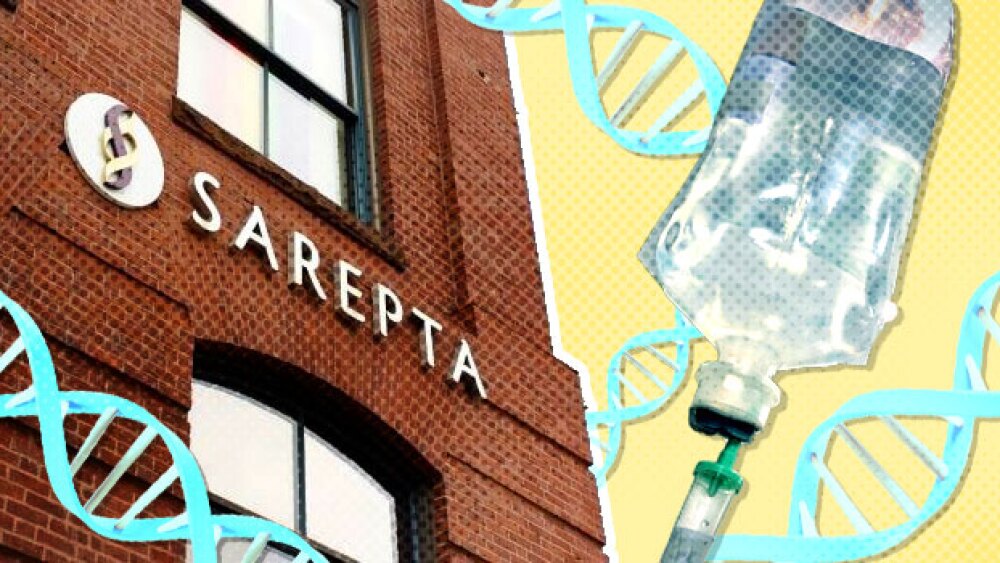| |
–Supplemental New Drug Application (sNDA) submission based on Phase 3 study of vibegron 75mg (GEMTESA) demonstrating statistically significant reductions in daily micturition and urgency episodes–
–If approved, vibegron will be the first and only beta-3 agonist for the treatment of men with OAB symptoms receiving pharmacological therapy for BPH–
MARLBOROUGH, Mass., May 13, 2024 /PRNewswire/ -- Sumitomo Pharma America, Inc. (SMPA), announced today the U.S. Food and Drug Administration (FDA) has accepted its supplemental New Drug Application (sNDA) for vibegron (GEMTESA®), a beta-3 adrenergic receptor (β3) agonist, dosed once-daily (75 mg), for the treatment of men with overactive bladder (OAB) symptoms receiving pharmacological therapy for benign prostatic hyperplasia (BPH). If approved, vibegron will be the first and only beta-3 agonist for the treatment of men with OAB symptoms receiving pharmacological therapy for BPH. The FDA has set a target action date in Q3 of FY2024, under the Prescription Drug User Fee Act (PDUFA).

The sNDA is supported by the results from URO-901-3005 a Phase 3 multicenter, randomized, double-blind, parallel-group, fixed-dose study, which evaluated the efficacy, safety, and tolerability of vibegron versus placebo over 24 weeks in approximately 1,100 men with OAB symptoms receiving pharmacological therapy for BPH. The study met all co-primary endpoints at Week 12, demonstrating statistically significant reductions from baseline in the average number of micturition (urination) episodes per day and in the average number of daily urgency episodes (the sudden urge to urinate that is difficult to control) compared to placebo as well as all secondary endpoints, including reduction of nocturia episodes (awakening to use the bathroom per night) and instances of urge urinary incontinence episodes (unintentional loss of urine immediately after an urgent need to urinate) per day. Vibegron was well-tolerated throughout the study and there were no new safety signals compared to prior vibegron studies.
"This milestone is important in our efforts to bring novel treatments to those living with urological conditions including OAB and BPH," said Tsutomu Nakagawa, Ph.D, President and Chief Executive Officer of SMPA. "We are pleased the FDA has recognized the strength of the Phase 3 data for vibegron in the URO-901-3005 study within our application. We look forward to working with the FDA during the review period in the hopes of potentially providing a new, safe, and effective treatment option for men struggling with OAB symptoms receiving pharmacological therapy for BPH."
BPH is increasingly prevalent in men as they get older and associated symptoms of OAB can often be mistaken as a natural part of aging. Nearly half of all men between ages 51 and 60 have BPH while up to 90% of men over age 80 have BPH.1 Approximately 46% of patients with bladder outlet obstruction secondary to BPH also have OAB.2
Vibegron is currently approved for OAB with symptoms of urge urinary incontinence, urgency, and urinary frequency in adults.
About GEMTESA (vibegron)
Vibegron, a once-daily beta-3 adrenergic receptor (β3) agonist, is currently under investigation for the treatment of men with overactive bladder (OAB) symptoms receiving pharmacological therapy for benign prostatic hyperplasia in the United States (U.S.). In the U.S., GEMTESA (vibegron) has been indicated for the treatment of OAB with symptoms of urge urinary incontinence, urgency, and urinary frequency in adults since April 2021. GEMTESA works by selectively targeting β3 adrenergic receptors to reduce OAB symptoms through the relaxation of the bladder detrusor muscle to increase capacity. In China and Europe, vibegron is currently under investigation in a Phase 3 clinical study for the treatment of OAB.
About Overactive Bladder
Overactive bladder (OAB) is a clinical condition that occurs when the bladder muscle contracts involuntarily. Symptoms may include urinary urgency (the sudden urge to urinate that is difficult to control), urgency incontinence (unintentional loss of urine immediately after an urgent need to urinate), and frequent urination (usually eight or more times in 24 hours).3 About 33 million U.S. adults experience the bothersome symptoms of OAB.4
About Benign Prostatic Hyperplasia
Benign prostatic hyperplasia (BPH) is a condition in men in which the prostate gland is enlarged. About 60% of men with BPH are treated for lower urinary tract symptoms (LUTS).5,6 LUTS can be divided into storage, voiding, and postmicturition symptoms.7 Over half of men with BPH report storage symptoms and about a quarter report voiding symptoms.6 This suggests that many men with a diagnosis of BPH may have overactive bladder.6 Many men who are treated for symptoms are assumed to have an obstruction in the bladder caused by an enlarged prostate.5,6 About half of all men between ages 51 and 60 have BPH and up to 90% of men over age 80 are living with the condition.1
INDICATIONS AND USAGE
GEMTESA is a beta-3 adrenergic agonist indicated for the treatment of overactive bladder (OAB) with symptoms of urge urinary incontinence, urgency, and urinary frequency in adults.
IMPORTANT SAFETY INFORMATION
CONTRAINDICATIONS
GEMTESA is contraindicated in patients with known hypersensitivity to vibegron or any components of the product.
WARNINGS AND PRECAUTIONS
Urinary Retention
Urinary retention has been reported in patients taking GEMTESA. The risk of urinary retention may be increased in patients with bladder outlet obstruction and also in patients taking muscarinic antagonist medications for the treatment of OAB. Monitor patients for signs and symptoms of urinary retention, particularly in patients with bladder outlet obstruction and patients taking muscarinic antagonist medications for the treatment of OAB. Discontinue GEMTESA in patients who develop urinary retention.
ADVERSE REACTIONS
Most common adverse reactions (≥2%) reported with GEMTESA were headache, urinary tract infection, nasopharyngitis, diarrhea, nausea, and upper respiratory tract infection.
Please see full Prescribing Information.
About Sumitomo Pharma
Sumitomo Pharma Co., Ltd. is a global pharmaceutical company based in Japan with key operations in the U.S. (Sumitomo Pharma America, Inc.), Canada (Sumitomo Pharma Canada, Inc.) and Europe (Sumitomo Pharma Switzerland GmbH) focused on addressing patient needs in oncology, urology, women's health, rare diseases, psychiatry & neurology, and cell & gene therapies. With several marketed products in the U.S., Canada, and Europe, a diverse pipeline of early- to late-stage assets, and in-house advanced technology capabilities, we aim to accelerate discovery, research, and development to bring novel therapies to patients sooner. For more information on SMPA, visit our website https://www.us.sumitomo-pharma.com or follow us on LinkedIn.
SUMITOMO PHARMA is a trademark of Sumitomo Pharma Co., Ltd., used under license.
Sumitomo Pharma America, Inc. is a U.S. subsidiary of Sumitomo Pharma Co., Ltd.
GEMTESA is a trademark of Urovant Sciences GmbH, and registered in the U.S., and in other countries.
© 2024 Sumitomo Pharma America, Inc. All rights reserved.
References
- Prostate Enlargement (Benign Prostatic Hyperplasia). National Institute of Diabetes and Digestive and Kidney Diseases. September 2014. https://www.niddk.nih.gov/health-information/urologic-diseases/prostate-problems/prostate-enlargement-benign-prostatic-hyperplasia
- Herschorn S, McVary K, Santos J, Foley S, Kristy R, Choudhury N, Hairston J, Kaplan S. Mirabegron Vs Placebo Add-on Therapy in Men With Overactive Bladder Symptoms Receiving Tamsulosin for Underlying Benign Prostatic Hyperplasia: A Safety Analysis From the Randomized, Phase 4 PLUS Study. Urology, volume 147, p235-242, January 2021. Published online 2020 October 09. doi: https://doi.org/10.1016/j.urology.2020.09.040
- Overactive bladder – symptoms and causes. Mayo Clinic. 2022. Accessed August 25, 2023. https://www.mayoclinic.org/diseases-conditions/overactive-bladder/symptoms-causes/syc-20355715
- Gomelsky A. Update on the management of overactive bladder: patient considerations and adherence. Journal of Urology. Open Access J Urol. 2011; 3: 7–17. Published online 2010 Dec 30. doi: 10.2147/OAJU.S7233
- Burnett AL, Walker DR, Feng Q, Johnston KM, Lozano-Ortega G, Nimke D, Hairston JC. Undertreatment of overactive bladder among men with lower urinary tract symptoms in the United States: A retrospective observational study. Neurourol Urodyn. 2020 Jun;39(5):1378-1386. doi: 10.1002/nau.24348. Epub 2020 May 8. PMID: 32383533; PMCID: PMC7384148.
- Anger, JT, Goldman, HB, Luo, X, et al. Patterns of medical management of overactive bladder (OAB) and benign prostatic hyperplasia (BPH) in the United States. Neurourology and Urodynamics. 2018; 37: 213–222. https://doi.org/10.1002/nau.23276
- Lepor H. Pathophysiology of lower urinary tract symptoms in the aging male population. Rev Urol. 2005;7 Suppl 7(Suppl 7):S3-S11. PMID: 16986059; PMCID: PMC1477625.
 View original content to download multimedia:https://www.prnewswire.com/news-releases/sumitomo-pharma-announces-fda-acceptance-of-supplemental-new-drug-application-for-vibegron-in-men-with-overactive-bladder-symptoms-receiving-pharmacological-therapy-for-benign-prostatic-hyperplasia-302143418.html View original content to download multimedia:https://www.prnewswire.com/news-releases/sumitomo-pharma-announces-fda-acceptance-of-supplemental-new-drug-application-for-vibegron-in-men-with-overactive-bladder-symptoms-receiving-pharmacological-therapy-for-benign-prostatic-hyperplasia-302143418.html
SOURCE Sumitomo Pharma America
|
|





